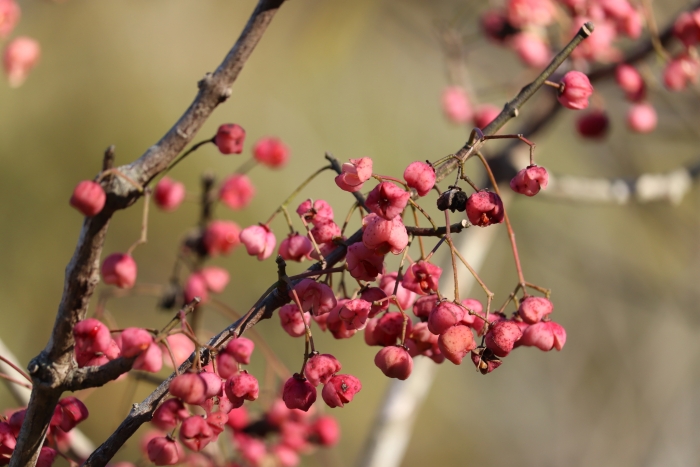Hamilton’s Spindletree
(Euonymus hamiltonianus)
Hamilton’s Spindletree (Euonymus hamiltonianus)
/
/

Se Lena
CC BY 4.0
Image By:
Se Lena
Recorded By:
Copyright:
CC BY 4.0
Copyright Notice:
Photo by: Se Lena | License Type: CC BY 4.0 | License URL: http://creativecommons.org/licenses/by/4.0/ | Rights Holder: Se Lena | Publisher: iNaturalist | Date Created: 2021-11-24T13:43:51-08:00 |

























Estimated Native Range
Summary
Euonymus hamiltonianus, commonly known as Hamilton’s spindletree, is a deciduous shrub or small tree native to a variety of habitats including mixed forests, forest margins, and scrublands in Asia, spanning regions such as Afghanistan, Russia, China, Japan, Korea, India, Nepal, Pakistan, Bhutan, Thailand, and Myanmar. It typically grows up to 10 feet as a shrub or can reach up to 65 feet tall when it matures into a tree form. The plant features oval leaves with pointed tips that turn yellow or reddish-purple in autumn, adding seasonal interest. Its small, inconspicuous white flowers bloom in cymose clusters in late spring to early summer, followed by distinctive pink to red fruit capsules that split open to reveal brown seeds encased in a fleshy orange aril.
Hamilton’s spindletree is valued for its ornamental foliage, which provides seasonal color, and its bright-colored fruits that add visual interest in the landscape. It is often used in gardens and parks for border planting, as a specimen plant, or for naturalizing areas. This species prefers well-drained soils, tolerates a range of soil types, and can grow in full sun to part shade. While it is relatively low-maintenance, it can be susceptible to scale insects and anthracnose. Gardeners should be aware that all parts of the plant are toxic if ingested.CC BY-SA 4.0
Hamilton’s spindletree is valued for its ornamental foliage, which provides seasonal color, and its bright-colored fruits that add visual interest in the landscape. It is often used in gardens and parks for border planting, as a specimen plant, or for naturalizing areas. This species prefers well-drained soils, tolerates a range of soil types, and can grow in full sun to part shade. While it is relatively low-maintenance, it can be susceptible to scale insects and anthracnose. Gardeners should be aware that all parts of the plant are toxic if ingested.CC BY-SA 4.0
Plant Description
- Plant Type: Shrub, Tree
- Height: 15-20 feet
- Width: 8-12 feet
- Growth Rate: Moderate
- Flower Color: N/A
- Flowering Season: Spring
- Leaf Retention: Deciduous
Growth Requirements
- Sun: Full Sun, Part Shade
- Water: Medium
- Drainage: Medium
Common Uses
Bird Garden, Border Plant, Low Maintenance
Natural Habitat
Native to mixed forests, forest margins, and scrublands in Asia
Other Names
Common Names: Hamilton’s Spindle Tree, Himalayan Spindle, Hamilton’s Strawberry Bush
Scientific Names: , Euonymus hamiltonianus, Euonymus atropurpureus, Euonymus darrisii, Euonymus dolichophyllus, Euonymus dorsicostatus, Euonymus europaeus var. hamiltonianus, Euonymus hamiltoniana subsp. sieboldianus, Euonymus hamiltoniana var. yedoensis, Euonymus hamiltonianus
GBIF Accepted Name: